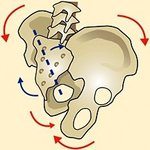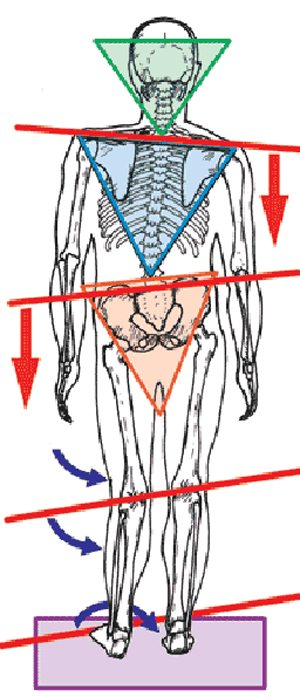Thumb, shoulder, wrist, elbow and back pain; the hidden meaning behind a weak handshake
Have you ever shaken somebody’s hand and they hand you the dead fish or a weak handshake?
Other than a weak grip, there is more to a weak handshake than meets the eye. From your chiropractor’s point of view, the weak handshake can tell a lot about the body mechanics of the person who shook their hand.
In our office, a handshake is a fast and easy diagnostic test for anyone with thumb, shoulder, wrist, elbow or back pain. While not traditionally considered an orthopedic test, the handshake can tell your healthcare provider more about what is going on with your body than you may realize in the few seconds it takes to shake hands. Unfortunately, not all doctors understand the value of a strong grip, or of a weak handshake.
Impaired body mechanics will cause back, shoulder, elbow, wrist, and even thumb pain and it all starts at the feet. When someone grips your hand, does the whole hand feel like it is squeezing, or perhaps, do you feel the thumb and the pinky only, or do you feel the middle fingers but less thumb and pinky? Believe it or not, diagnostically, it can give your healthcare provider clues as to why you are experiencing pain. From the patients point of view, they feel pain but may not understand why they hurt, which is why they visited a doctor in the first place.
Unfortunately, most doctors were trained to look at where a patient hurts rather than why and will often medicate or inject the site of pain, with unpredictable results. The good news is that since the 1990’s. many doctors are beginning to learn active evaluation methods, the handshake being one of them, which makes for a much more accurate diagnosis of where the problem comes from. By using test, treat, and then retest protocols, they can figure out through the process of elimination where the problem is coming from. This is similar to a roof leak in your home, which can begin at a different place in the roof than where the water actually does the inside damage.
Symmetrical or asymmetrical body styles, which do you have?
 Many of us are built asymmetrically. The problem with asymmetry is that the body will adapt to this by having one side of the hips and pelvis working one way and the other side working the other. This is like a towel being twisted. Since we transmit all forces through the pelvis, if the pelvis is distorted, we no longer distribute forces through the body properly, lose leverage and have difficulty and pain in the back and the legs.
Many of us are built asymmetrically. The problem with asymmetry is that the body will adapt to this by having one side of the hips and pelvis working one way and the other side working the other. This is like a towel being twisted. Since we transmit all forces through the pelvis, if the pelvis is distorted, we no longer distribute forces through the body properly, lose leverage and have difficulty and pain in the back and the legs.
Most people who are asymmetrically built are used to it since it is developmental, and since they have always felt a certain way, it seems normal to them. When they are in pain, it is of course no longer considered normal.
The path forces travel through in the body are called kinetic chains. The foot, knee, and hip are a fascio kinetic chain, as are the wrist, elbow, and knee. If the foot, knee, and elbow function inefficiently on one side (the firing order is inappropriate or incorrect), and the other side functions differently, we load the body mid-section differently and the myofascia surrounding the area shortens and tightens in response to those forces, often resulting in chronic pain.
The result is distortion of the core region will result in a compensatory distortion of the upper body which alters the way you use your shoulder, elbow, wrist and thumb and the way forces are distributed in the kinetic chains. When these mechanisms work improperly, pain is the result since it literally creates a tug of war between the two sides of the body and the compensation in the upper body will create torsion which strains joints throughout the body, distributes forces from the ground up improperly; the ultimate result being pain.
What to do if you have poor grip strength and suffer from back, shoulder, elbow, thumb, and wrist pain or carpal tunnel syndrome.
1. Visit a chiropractor or someone who is knowledgeable in active evaluation methods. Only if you understand why you are hurting, can you find an effective solution. Injecting or medicating an area in pain should be a last resort.
2. Wear shoe inserts or shoes with good arches. These are known to improve body mechanics by altering your natural asymmetrical tendencies while you walk. If used properly, they will level your hips and improve the way your body moves and functions.
3. Visit a practitioner who is skilled in spinal and extremity manipulation and also knows how to perform myofascial release treatment. Sports-certified chiropractors are often a great source for this type of care. This is the most effective way of resolving these types of problems since wearing inserts alone will not resolve the compensations that have taken place in myofascia. A good therapist will apply myofascial techniques to help improve your body mechanics further and then recommend exercises to retrain the area.
4. Read the book Cheating Mother Nature, what you need to know to beat chronic pain. Available on Amazon.com, this book will help you understand why you hurt and how you can get the care you need to best improve or resolve painful conditions for both you and your family.
5. Get a grip on that handshake! Nothing is worse than meeting someone and slipping them the dead fish.
Do you need help today? Book online here.


